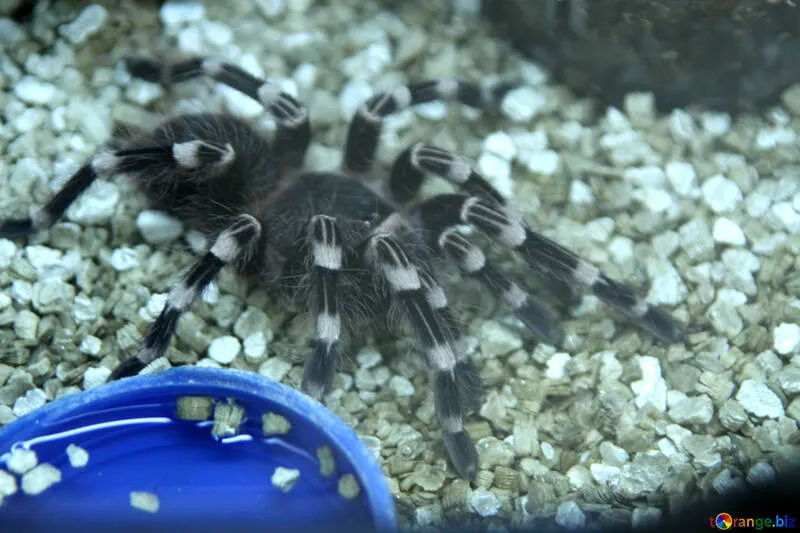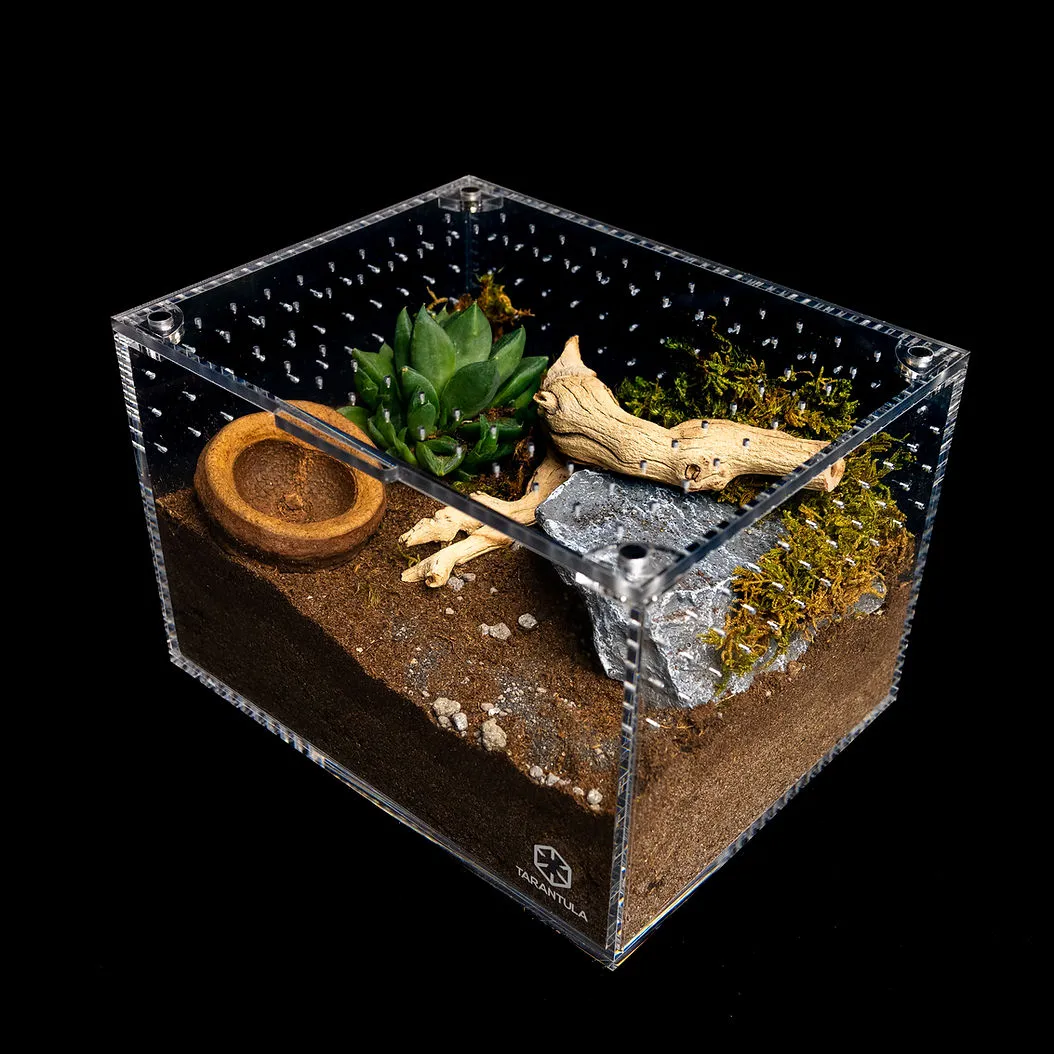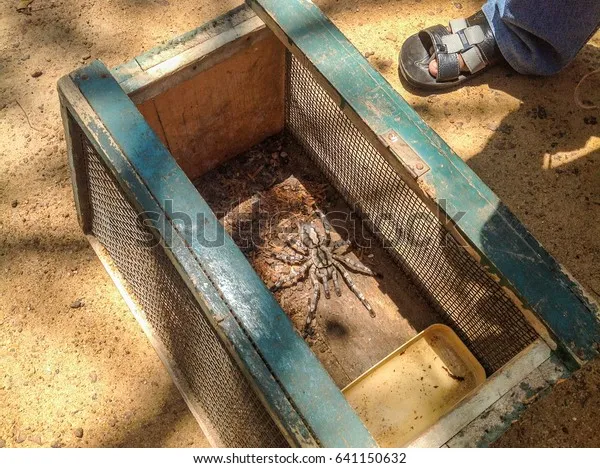What to Do If Your Tarantula Escaped
Finding your tarantula outside its enclosure can be a stressful experience, but it’s crucial to stay calm and act quickly. An escaped tarantula is a situation that requires immediate attention to ensure both the safety of your pet and the peace of mind of everyone in your household. This guide will provide you with a step-by-step approach to safely locate and recapture your tarantula, as well as preventative measures to avoid future escapes. Remember, your tarantula’s well-being, along with the safety of any potential occupants, should be your top priorities. Proper handling and a methodical approach are key to a successful resolution.
Remain Calm & Assess the Situation
The first and most important step is to remain calm. Panic will only cloud your judgment and make it harder to find your tarantula. Take a deep breath and assess the situation. Consider when the tarantula likely escaped, the last time you saw it, and the size and species of your tarantula. These details will help you narrow your search. Determine the direction in which it could have moved, taking into account potential hiding spots and the layout of your home. Don’t assume your tarantula has gone far; they often stay relatively close to their enclosure, especially if they haven’t been away for long. Also, consider any potential hazards in the area that could pose a threat to your tarantula, such as other pets, children, or areas where it might encounter chemicals or extreme temperatures.
Secure the Area

Before you begin the search, it’s important to secure the area where your tarantula escaped. Close doors and windows to prevent the tarantula from leaving the room or house. If other pets are present, such as cats or dogs, make sure they are secured in a separate room or supervised closely during the search. Inform any family members or roommates about the situation, so they are aware and can help you keep an eye out. Turn off any fans or air conditioning units, as these can create drafts that may influence the tarantula’s movement or potentially cause them harm. Minimizing potential escape routes and environmental hazards is a crucial step in ensuring the safe recapture of your tarantula and preventing further complications.
Gather Your Supplies
Having the right tools on hand will greatly assist your search and capture efforts. Gather these essential items: A flashlight or headlamp will be invaluable for checking dark corners and under furniture. A long pair of tongs or forceps will allow you to safely handle the tarantula from a distance, minimizing the risk of being bitten. A clear plastic container with a lid is perfect for capturing and transporting your tarantula once found. You may also want to prepare a small container with some of the tarantula’s substrate, like coconut fiber, to help keep it comfortable during capture. Gloves are optional, but recommended, especially if you’re not used to handling tarantulas or are concerned about a potential bite. Having these supplies ready before you start your search will save valuable time and reduce stress.
The Best Ways to Find Your Tarantula
Now that you’ve prepared, it’s time to start your search. Tarantulas are primarily nocturnal creatures and will likely be hiding in a dark, secluded spot. Patience and a systematic approach are key. Begin your search in the immediate vicinity of the enclosure and slowly expand your search area. Use your flashlight to check under furniture, behind appliances, in the folds of curtains, and any other potential hiding places. Be thorough and methodical; missing a hiding spot can significantly prolong the search. Remember, tarantulas are surprisingly good at squeezing into tight spaces. Consider the environmental preferences of the species of tarantula you have, as this will provide clues where it may likely be.
Search High and Low

Tarantulas can climb surprisingly well, so don’t limit your search to ground level. Check along walls, inside bookshelves, and behind picture frames. They may also seek out elevated positions for safety. Carefully inspect any areas that offer shelter or cover. Pay close attention to areas where there is a lot of clutter, as tarantulas can easily blend in with their surroundings. Take your time and look in every nook and cranny. Remember to be gentle when moving objects, as you don’t want to accidentally injure or startle your tarantula.
Check Dark and Hidden Places
Dark and secluded spots are the preferred hiding places for tarantulas. These spiders are naturally inclined to seek shelter in dark locations where they feel safe. Focus your search on these areas. Check under furniture, inside cabinets, behind appliances, and in the crevices of walls. Dark spaces provide the security and privacy that these spiders crave. Also inspect areas such as inside shoes, piles of clothing, and behind or under any items that are not frequently moved. These areas give the tarantula a good hiding place. If you are searching at night, remember the tarantula might be more visible with the help of a flashlight.
Use a Sticky Trap (and Why)
Sticky traps, also known as glue traps, can be a useful tool in locating and capturing an escaped tarantula. Place these traps in strategic locations, such as along walls, near the enclosure, and in areas where you suspect the tarantula might be hiding. The adhesive surface will capture the tarantula as it moves around. While effective, you must use sticky traps with caution. Check them frequently to avoid the tarantula getting stuck for too long, which could cause stress. If your tarantula is caught in a sticky trap, carefully remove it using vegetable oil to loosen the adhesive. Remember to handle your tarantula with care throughout the process. If you have other pets, place the traps out of their reach to prevent them from getting stuck. The sticky traps are useful as a last resort.
Capturing Your Escaped Tarantula

Once you’ve located your tarantula, the next step is to capture it safely. Approach the tarantula slowly and deliberately, speaking calmly to avoid startling it. Use the tongs or forceps to gently guide the tarantula into the clear plastic container. Avoid grabbing or squeezing the tarantula, as this can injure it or cause it to become defensive. If the tarantula is in a difficult-to-reach spot, you may need to gently coax it out using a soft brush or a piece of paper. Make sure the container has a secure lid to prevent the tarantula from escaping again. Once captured, transport the container to the tarantula’s enclosure.
Gentle Handling Techniques
When handling your tarantula, always prioritize gentleness and caution. Tarantulas are fragile creatures, and sudden movements or rough handling can lead to injury. Approach the tarantula calmly, and avoid making any sudden movements that might scare it. To safely handle the tarantula, try to coax it onto your hand. If you’re uncomfortable with this, use tongs or forceps, guiding the tarantula carefully into the container. Once it is in the container, place the lid. Never try to pick up a tarantula without understanding how to properly handle it. If you are not comfortable, call a professional. Ensure the tarantula feels secure and safe throughout the capture and returning processes.
Returning Your Tarantula to Its Cage
Once you’ve successfully captured your tarantula, the next step is to return it to its enclosure. Before releasing the tarantula, carefully inspect the enclosure for any potential escape routes or hazards. Ensure the lid is properly secured and that there are no gaps or weaknesses in the enclosure’s construction. Place the container with the tarantula inside the enclosure. Gently tilt the container to allow the tarantula to walk out on its own. Avoid shaking or dropping the tarantula into the enclosure. Observe the tarantula for a few minutes to make sure it’s settling back in comfortably. Once the tarantula is safely back in its enclosure, you can breathe a sigh of relief, but be ready to prevent a future incident.
Preventing Future Escapes

After successfully retrieving your tarantula, it’s essential to take steps to prevent future escapes. This includes a careful assessment of the enclosure and its environment. Inspect the enclosure regularly for any signs of wear and tear, such as cracks, loose lids, or gaps that could allow the tarantula to escape. Also, identify any potential weaknesses in the enclosure. Ensure the lid is secure, and if necessary, secure it with additional clips or fasteners. Regularly check the door closures. These animals are escape artists. Address any issues promptly. By doing this, you are safeguarding the tarantula and reducing the risk of a repeat situation. Preventative measures are crucial for maintaining a safe environment for your pet tarantula and reducing the stress of another escape.
Inspect the Enclosure Regularly
Regular inspections of your tarantula’s enclosure are essential for preventing future escapes. During your routine checks, examine the enclosure for any signs of damage, such as cracks, loose lids, or compromised seals. Pay particular attention to the corners, seams, and any areas where the tarantula might be able to push or squeeze its way out. Check that the lid fits snugly and is securely fastened. If you find any issues, address them immediately. This might involve replacing a damaged enclosure or making minor repairs. Regular inspections are key to maintaining a secure and safe environment for your pet and preventing future escape attempts. Create a routine to include checking the enclosure.
Upgrade Your Enclosure if Needed
If you consistently have issues with your tarantula escaping, it may be time to upgrade its enclosure. Choose an enclosure made from a durable material, such as glass or acrylic, that can withstand the tarantula’s burrowing and climbing habits. Select an enclosure with a secure lid. Ensure the lid has a reliable locking mechanism. The size of the enclosure is also important. Provide enough space for your tarantula to move around comfortably. A well-designed enclosure can also offer a more stimulating environment for your tarantula. By investing in a high-quality enclosure, you can significantly reduce the risk of escapes and create a safer, more secure habitat for your pet tarantula. Consider species of tarantula and their respective habitats. If the enclosure is not appropriate, your tarantula might seek escape.
Common Questions About Escaped Tarantulas

Dealing with an escaped tarantula can raise many questions. Here are some of the most common ones. Are tarantulas dangerous if they escape? While tarantulas are venomous, their bite is generally not considered life-threatening to humans. However, a bite can be painful and may cause localized symptoms such as redness, swelling, and itching. Allergic reactions are rare but possible. Can a tarantula survive outside its enclosure? The survival of an escaped tarantula depends on various factors, including the species, climate, and availability of food and water. In most indoor environments, a tarantula can survive for several weeks or even months. What should I do if I can’t find my tarantula? If you’ve exhausted all search efforts, contact a professional pest control service or a veterinarian specializing in exotic animals. They can provide additional assistance in locating and capturing your tarantula.
Handling an escaped tarantula can be stressful. However, by following these steps, you can increase your chances of safely finding and recapturing your pet. Remembering to remain calm, secure the area, and use the right tools. Implementing preventative measures to prevent future escapes is also extremely important. With patience, caution, and attention to detail, you can ensure both the safety of your tarantula and your peace of mind.
